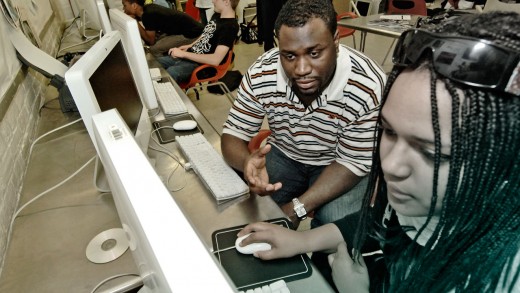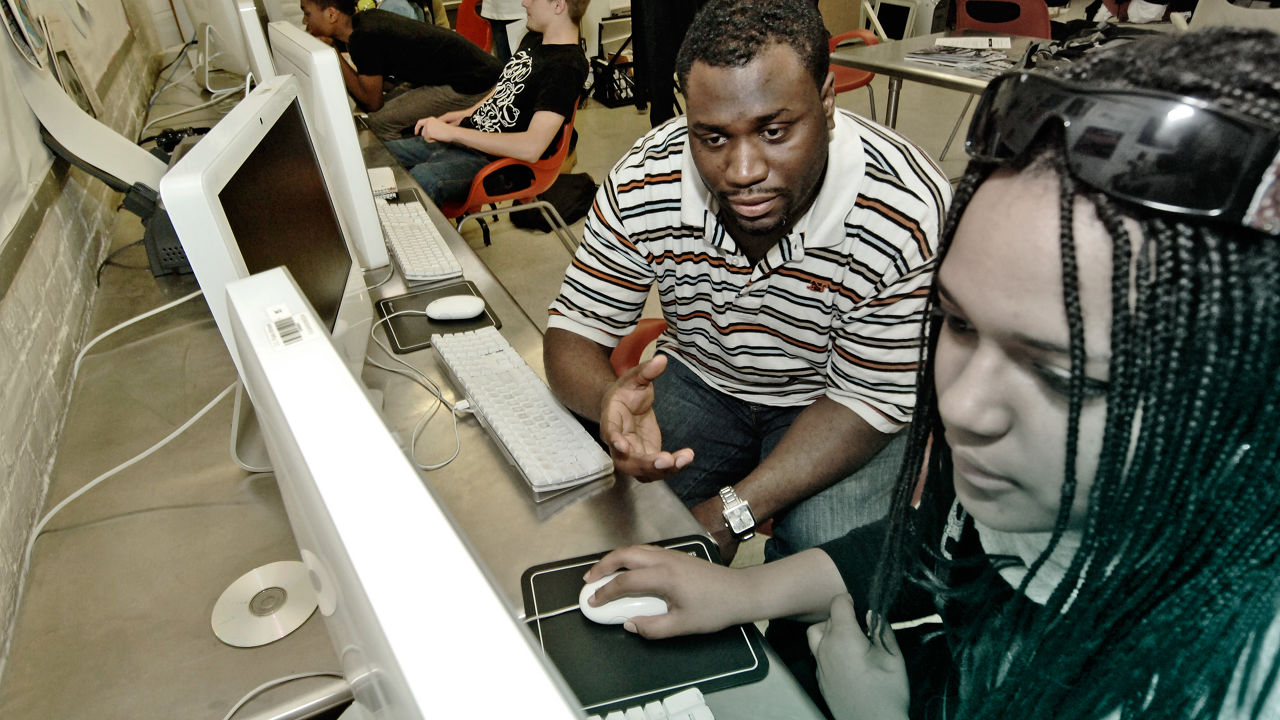As Schools Emphasize Computer Science, How Do We Teach Teachers To Code?
Last month, President Obama announced a plan to bring computer science into all American classrooms. The initiative, called Computer Science For All, would devote part of the 2017 fiscal budget—about $4 billion in funding for states and $100 million for school districts—to bringing public schools up to standard with their science, technology, engineering, and math (STEM) education programs. Computer science is a “new basic” skill, the president said, and our children can no longer afford to miss out.
Whether the ambitious new plan comes to fruition will depend largely on the budget being approved. In addition to those proposed funds, more than $135 million is already being made available, thanks to investments from the National Science Foundation and the Corporation for National and Community Service. That money will go directly toward supporting and training teachers in computer science. But what exactly does that mean? When, where, and how will this training take place?
One thing it doesn’t mean, or it really shouldn’t mean, is that we replace any existing teachers with engineers or computer science specialists. “Learning how to code is certainly not an easy task, but it pales in comparison to learning how to teach,” says Adam Enbar, cofounder of the Flatiron School, a coding academy in New York.
Indeed, it doesn’t matter how well you know your way around a line of code if you can’t impart that information clearly to a pupil, a lesson Gina Sipley, a former English and social studies teacher, experienced firsthand when she herself was learning to code through a General Assembly course. “The teacher we had was a brilliant programmer, that was clear, but had never taught before,” she explains. “So as the course went on, people sought out the teachers in the room and said, ‘This doesn’t make sense. How would you present the information?’ I don’t have a deep content knowledge at all, but I know how people learn best and how to structure lessons so people are going to get the most out of it.”
So, what’s the smartest, most effective way to go about teaching our 3.1 million existing public school teachers to code, so they’re prepared to teach our students?
Pay Them To Learn
As it stands now, if a teacher wants to study computer science, the onus is on him or her to find a course, pony up the dough, and carve out the hours. This can be difficult for teachers, many of whom are already strapped for time and resources. As an example, in New York, a part-time front-end development course with General Assembly costs $3,500 and requires at least six hours of availability a week for 10 weeks. This means the most realistic option is to take a course during the summer, as Sipley did. “There’s a lot of pressure on you as an individual to take that task on,” she says. She had the benefit of living near a metropolitan tech hub, but teachers living in rural areas might not share the same advantage.
If we really want teachers to prioritize this new skill, we must make it easy to access. One good example of an institution doing this well is the Hamlin School, an all-girls private school in San Francisco. A few years ago, the school began to teach computer science to every student, from kindergarten through 8th grade. But instead of asking the staff to give up their free time to learn coding, they built computer science classes into the existing school schedule. Training happens at biweekly staff meetings where an eight-person “tech team” works with the teachers in small groups or individually. “It’s not after-hours,” says Mark Picketts, director of technology and innovation at Hamlin. “They’re paid to be there. If you don’t provide that time, it’s just another thing they’re expected to do. By not giving the time, you’re telling them you don’t value it enough.”
Build It Into Every Subject
One of the biggest questions for schools will be how to integrate computer science into the curriculum effectively. Should there be a course students are required to take? Does it get lumped into science and math classes? Sipley thinks the best idea is to treat coding like a literacy that spans the entire curriculum, much like reading and writing. “In same way you have a dedicated English teacher teaching grammar and structure, you also write in your other classes, right?” she explains. “There’s a shared responsibility for writing and reading across the curriculum, and I think, ideally, that’s where we’ll move computer programming. It can be integrated into math class and social studies class and foreign language class and music class.”
For example, when she taught middle school English, Sipley had her students find a soliloquy in their assigned text and develop a web page around it. “The key is the technology isn’t driving the curriculum,” she says. “Think about it is an adaptation on the pencil or the pen or tools you’d normally use in the classroom. These are just better tools.”
Teach The Basics, And Teach Them Often
“They don’t need to be experts; they need to know enough,” says Enbar. “Just like a math teacher doesn’t need a PhD to teach math, they don’t need a computer science degree to teach computer science. They need just enough to teach it for a year.” This might mean about 200 hours of basic training to provide a teacher with enough knowledge for a year’s worth of lessons.
But computer science isn’t a static skill. It is constantly changing as technology evolves, which means that a single course probably won’t be enough. “If you do something in summer, for example, that’s great, but you definitely want to have continuing education as well,” says Hailey Foster, a former middle school math and science teacher turned software engineer.
At Hamlin, the program is constantly changing in response to how it’s received in the classroom. “We’re constantly reflecting and tweaking and changing,” says Picketts. “The stuff that used to challenge our seventh graders is now easy for our fourth graders.” Sometimes the teachers at Hamlin know less about computer science than the students do, which Picketts says has to be okay. “That’s the new world of education. Things are moving so fast that the students sometimes will know more than our best teachers. So the real skill set is, if the student comes to me, and I don’t know the answer, we’ll go find out together.”
Work With Outside Groups
When Ruth Mesfun, a teacher at Excellence Girls Middle Academy, wanted her sixth graders to see tech education in action, she took them on a field trip to the Facebook office. But that was coordinated entirely by her, thanks to a connection she had inside the company. “I don’t think right now we’ve done a very good job of connecting or networking companies with educators,” she says.
As part of the president’s initiative, Code.org will offer more workshops and support for teachers learning to code. Also, a handful of organizations, including Google and Microsoft, are launching campaigns to expand computer science investment and training.
The Hamlin School frequently invites speakers to talk about how they’re using computer science skills in the real world. “The girls can see themselves in those roles and see what they can do,” Picketts says. “We believe coding will give them the opportunities to build their dreams.”
Fast Company , Read Full Story
(48)














